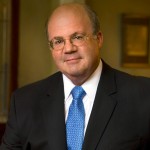New Insights Into Ways Consumers Really Think About Funerals
While at the NFDA Convention I always try to attend at some of the workshops and seminars. This year there were a number of workshops I wanted to attend but with scheduled meetings and networking during the expo I had to pick just one.
I choose to attend the seminar led by Alan Creedy titled “Breaking the Consumer Code”. Alan shared monumental results from the research project the Funeral Service Foundation did with world renowned Olson-Zaltman Associates.
Below is a top ten highlight summary of the seminar written by Krystal Penrose of FuneralOne.
Article originally appeared on the FuneralOne Blog and was reposted here with permission.
New Insights Into Ways Consumers Really Think About Funerals
The Funeral Service Foundation has just released the results of its “Bleeding Edge” research project with world renowned Olson-Zaltman Associates simultaneously revealing both disturbing and encouraging insights.
More than 160 people ages 50-70 (Baby Boomers) were interviewed in-person for 90 minutes on their opinions of traditional funerals. The goal was to better understand what modern consumers are seeking in end-of-life service or ceremony.
Here are 10 highlights of their findings:
1. 99% of funeral home facilites reinforce consumer attitudes toward death. The earth tones in the interior of a funeral home actually makes consumers feel as if they’re in a tomb. And, the exterior of most funeral homes looks like a mausoleum.
2. A traditional funeral is seen to Baby Boomers as a lonely, lifeless tomb. They feel along, cold, confined and forced to face reality on their own. Traditional funeral se
3. Funeral home advertising, as well as all pictures and visuals that funeral homes publish into this world reinforce consumers fear of being “trapped” in their grief. Think about it… how many funeral home advertisements have a grieving widow or a hearse in them? We need to reinvent and rethink our advertising efforts.
4. Despite popular belief, Baby Boomers actually have an intense interest in talking about death and dying. They want to know their end-of-life options, and do something creative to celebrate their own life.
5. Of all subjects interviewed in this study, not a single participant said they wanted to do nothing for their end-of-life. This means the opportunity to eliminate direct cremation IS there.
6. Many alternative seekers have an intense interest to explore the topic of death, so they’re not afraid to talk about it.
7. The negative feelings towards funeral directors isn’t as prevalent any more. They’re not seen as “bad” people, but as gatekeepers who are just there to do their jobs and nothing more.
8. While many interviewees shared negative thoughts of traditional funerals, many people were excited to explain what they want in their non-traditional funeral. In fact, many interviewees hugged their interviewer because they finally had a chance to talk about how they want their end-of-life to be.
9. Boomers see non-traditional funerals as their “crowning performance”. They want to be the writer, the director and the star. Funerals, to them, should be a celebration event that truly reflects them.
10. Consumers want their service to be:
– Improvisational – freedom to imagine and celebrate life in the way they see appropriate
– A real, true account of their life –friends & family will share their personal stories
– My life will be on display – family & friends will see the real them
– My values will be on display – family and friends will see what was important to me – such as religion.
– I want to feel like I matter – They want to be remembered and like they’ve made a difference and touched people in some way.
How you can start offering a non-traditional service
Don’t let the negative findings stop you from moving forward. There IS a way to take advantage of these findings. Start by following Al’s simple steps to offering a non-traditional service.
- Start the conversation – Get involved in the pre-planning stage. Research what’s meaningful to them and find out what places, events, accomplishments and interests are significant to them. Then, customize the service accordingly.
- Focus on the details – Be a muse who gives consumers ideas and inspire creative thinking. The funeral director should help them make a unique celebration of life complete with music, props and surroundings.
- Be a stage manager – Be flexible, efficient and effective.
- Think about the design of your funeral home – minimize feelings of confinement. Give people a more sense of control. Make them feel like your funeral home is where transformations occur. Create open, naturally lit areas in your funeral home that encourage conversations. Think about outdoor mourning spaces, open floor plans, and writable walls that can be personalized.
Al Creedy’s conclusion
He said it so good himself, it deserves a quote:
“We are not in the business of helping people escape reality, we are in the business to help people heal. To make them feel like they mattered to someone, and they will live on in a memory and will be missed. Is that really asking so much? Our goal is to create a safe place to remember, and be remembered, to comfort and be comforted. What we do is worth it, without society would be lesser. We don’t make things, sell things… we help people restart their lives. And best of all, we make sure no one is forgotten. Understand WHY it is what you do… why humans gather in times of distress, or share memories at a time of loss? Society needs us in these roles. Be proud in your profession. We are in the sacred business of hope, life and transformation. “
 ABOUT AL CREEDY: “Ya know how sometimes we get ourselves into situations and nothing we do seems to work to get us out? Well, Alan Creedy has the unique ability to quickly see what can be done, separate it from the ‘rabbit trails’ and create a personal strategy for success.” Alan Creedy is a business advisor and consultant with more than 32 years experience in the funeral and cemetery professions.
ABOUT AL CREEDY: “Ya know how sometimes we get ourselves into situations and nothing we do seems to work to get us out? Well, Alan Creedy has the unique ability to quickly see what can be done, separate it from the ‘rabbit trails’ and create a personal strategy for success.” Alan Creedy is a business advisor and consultant with more than 32 years experience in the funeral and cemetery professions.
Subscribe for free to his weekly commentary offering insights for better performance by clicking here on The Creedy Commentary




